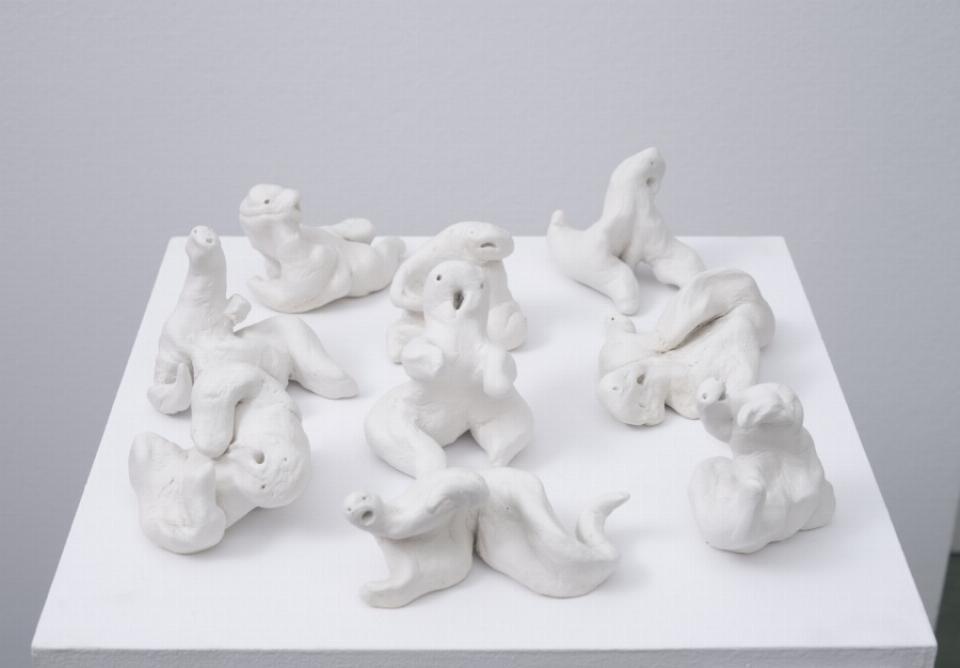Agnieszka Brzeżańska
Oyster spiris
Agnieszka BrzeżańskaOyster Spirits, 2019sculpture, cellulose fibre, 9 figurines, each ca. 10 × 10 × 10 cmCollection II of the Arsenal Gallery in Białystok. Work purchased by the Arsenal Gallery in 2021

Agnieszka Brzeżańska’s work Oyster Spirits consists of nine small-scale sculptures formed by hand from white cellulose fibre. Their rounded, amorphous shapes bring to mind molluscs, seals or popular images of ghosts. Outlines of heads, bodies and tails are suggested, and the eyes and mouths are marked by slight dimples in their almost shapeless forms. Especially those barely discernible eyes and mouths make the figurines appear frightened; the viewer perceives them as unnerving. The way they are formed – twisted, distorted, spasmodically curled – makes them seem struck by some accident, suddenly frozen in an attack of panic or convulsions. They can be interpreted as silent witnesses to some catastrophe; the situation constructed by the artist brings to mind a post-apocalyptic reality and turns into a dystopian image of a post-human universe.
Science fiction productions suggest many scenarios for the end of the world as we know it. The petrified figurines evoke similar visions familiar from various beliefs, myths or archaeological finds; suffice it to mention Lot’s wife, who turned into a pillar of salt when, heedless of Yahweh’s warning, she looked back at the cursed city of Sodom wherefrom her family had just fled, or the goddess Niobe from Greek mythology, who having lost her children, turned into a rock. In Pompeii, the visitors see white plaster casts of human and animal bodies; those were once the victims of the eruption of Mount Vesuvius in the 1st century AD. However, the evocative title of Brzeżańska’s work, Oyster Spirits, prompts us to place her sculptures in the sphere of issues that are more tangible and closer to us, namely the effects of the climate crisis and uncontrolled exploitation of Earth’s resource, including mass extinction.
The technique adopted by the artist reveals much about her approach to creativity. Brzeżańska gives art an ethical dimension; yet sophisticated intellectual quality, even though present in her artistic explorations, seems to give way to a direct experience of tangible material. Making use of computer algorithms, sharing her work with artificial intelligence or deputing the production of her works to subcontractors are alien to her. Brzeżańska consciously touches substances, be they natural, such as clay, or chemically transformed, such as cellulose fibre. She acquaints herself with the character of those substances, the pliability or resistance of matter, and gives them shape herself, based on a craftsman’s workshop.

PLAN YOUR VISIT
Opening times:
Thuesday – Sunday
10:00-18:00
Last admission
to exhibition is at:
17.30